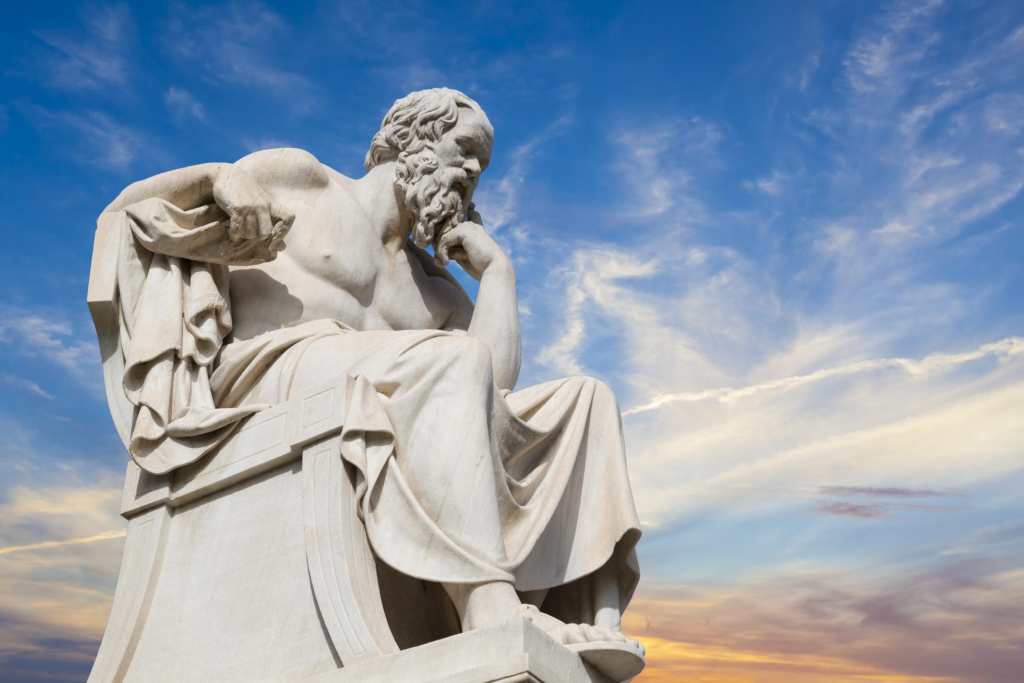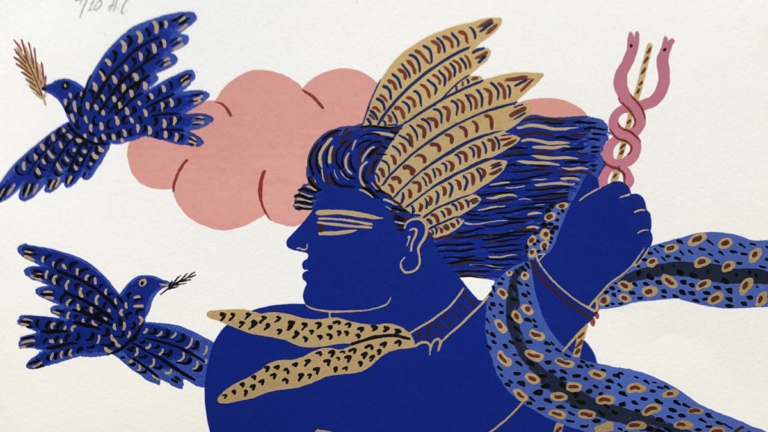Throughout human history, systems of thought and beliefs have been fundamental in shaping how societies organize and evolve. In ancient times, people’s attempts to understand the world and the universe were shaped by myths—stories and symbols that explained the workings of the cosmos, life’s meaning, and natural phenomena. Over time, however, these mythological narratives were gradually replaced by reason and logic, known as logos. This transition marks a significant turning point in the intellectual development of humanity.
What is Mythos?

Mythos can be defined as a collection of stories and symbols that ancient societies used to explain natural events, the origins of life, and the workings of the universe. These myths often involved supernatural powers, gods, and heroes, reflecting the cultural identity, religious beliefs, and social values of the communities that created them. In ancient Greece, myths were used to explain various phenomena, from natural events to human behavior, providing a framework for understanding the world.
For example, in Greek mythology, stories of gods and heroes were used to explain various occurrences in human life and natural events. Conflicts among gods were linked to wars and victories among humans, and natural phenomena were seen as the actions of divine forces. Thus, myths were powerful narratives that reflected the religious and moral values of societies.
The Emergence of Logos

Logos represents thought based on reason and logic. In ancient Greece, philosophers began to develop a different approach to understanding the universe and human life, one that differed from mythos. This approach involved explaining events in the world through natural causes and rational deductions. Logos, in this context, means the use of reason and logic to understand nature, humanity, and society.
This new mode of thinking, which emerged in the 6th century BCE in Ionia, was particularly championed by philosophers such as Thales, Anaximander, and Heraclitus. These philosophers sought to understand the origins and nature of the universe through observation and logical reasoning. For instance, Thales proposed that the world floated on water and that all matter was composed of different forms of water. Anaximander, on the other hand, suggested that the universe was based on an infinite principle known as apeiron.
The Process of Transition from Mythos to Logos

The transition from mythos to logos represents a profound shift in how people understood the world. This process involved moving from mythological explanations of the universe and nature to explanations grounded in reason and logic. The primary motivation behind this shift was the desire for a systematic and consistent method to understand nature and the universe.
The early Greek philosophers were not content with mythological stories; instead, they sought to explain the origins and nature of the universe in a scientific and logical manner. This led to the development of philosophical thought and the laying of the foundations for science. For example, Pythagoras and his followers attempted to explain the universe through mathematical principles. Pythagoras’s idea that “everything is number” suggested that the order in the universe could be explained through numbers and mathematical relationships.
The Coexistence of Mythos and Logos

The transition from mythos to logos does not imply that mythology completely disappeared. On the contrary, mythos and logos coexisted for a time. Many ancient Greek philosophers used mythological narratives to express their philosophical ideas. For instance, Plato employed mythological tales like the “Allegory of the Cave” to explain the limitations of human knowledge and the process of seeking truth.
This coexistence suggests that mythos and logos can be seen as complementary systems of thought. While mythos represents the symbolic and imaginative aspects of the human mind, logos stands for logic and rationality. These two approaches can be used together to understand different aspects of human experience.
The Impact of the Transition from Mythos to Logos
The transition from mythos to logos represents a profound transformation in human thought. This shift led to the foundation of science, philosophy, and logic, greatly contributing to the intellectual development of humanity. Logos offered a systematic approach to understanding natural phenomena and the universe, which laid the groundwork for modern scientific thinking.
However, it is important to note that myths did not completely disappear; instead, they have continued to exist as part of cultural and artistic narratives. While myths express the symbolic and archetypal elements deep within the human psyche, logos seeks to analyze and understand these elements. These two systems of thought reflect the richness and diversity of human experience.
The transition from mythos to logos is one of the most significant intellectual transformations in human history. This process resulted in the replacement of mythological thinking with reason and logic. However, this transition does not mean that myths have completely disappeared. Instead, mythos and logos have continued to exist as two important elements of human thought, complementing each other. Today, both the cultural legacy of myths and the scientific and philosophical contributions of logos have left deep imprints on the history of humanity.


